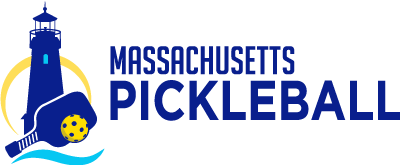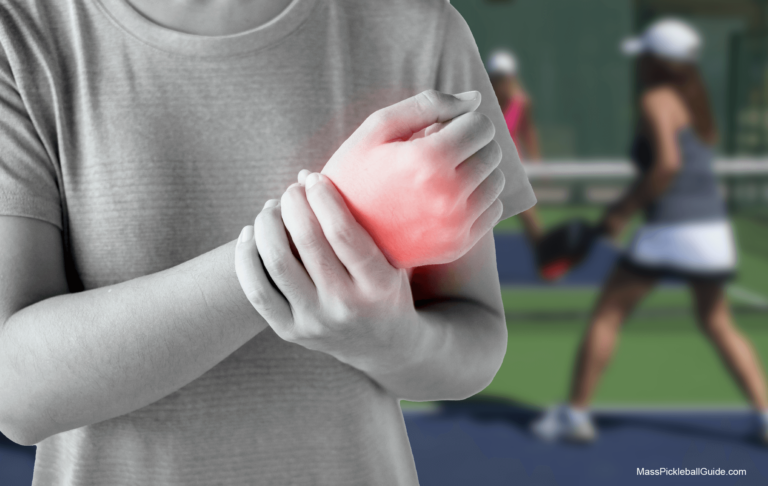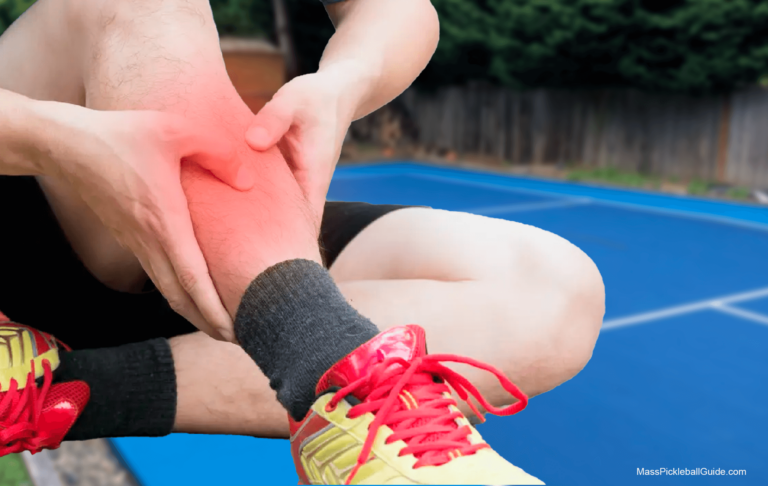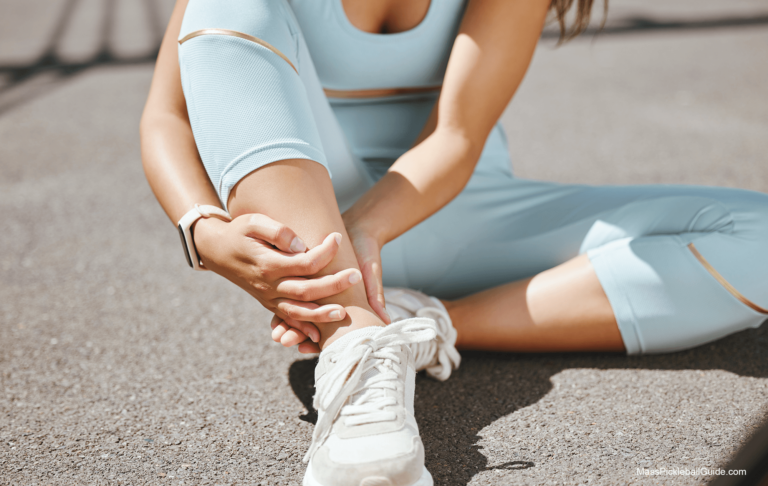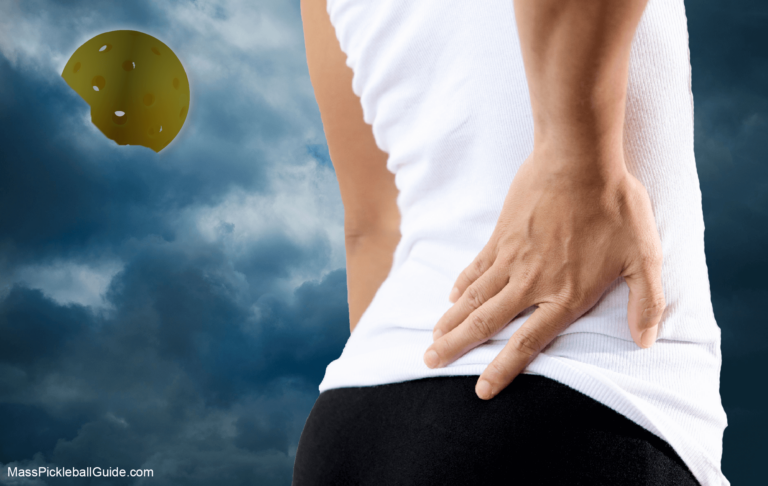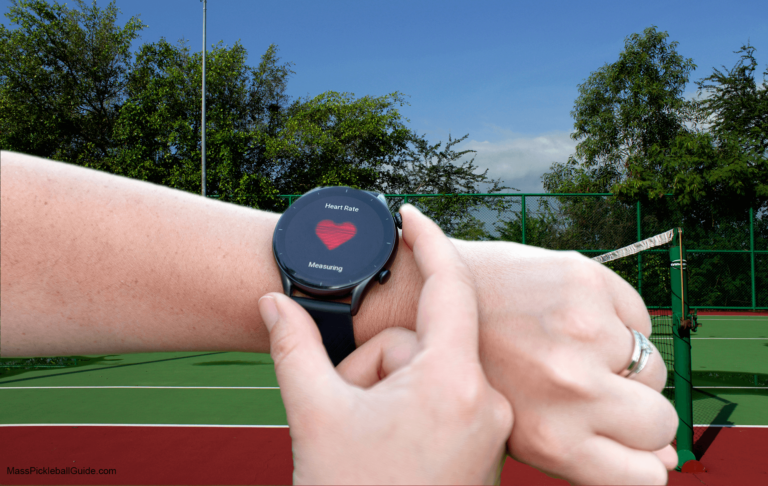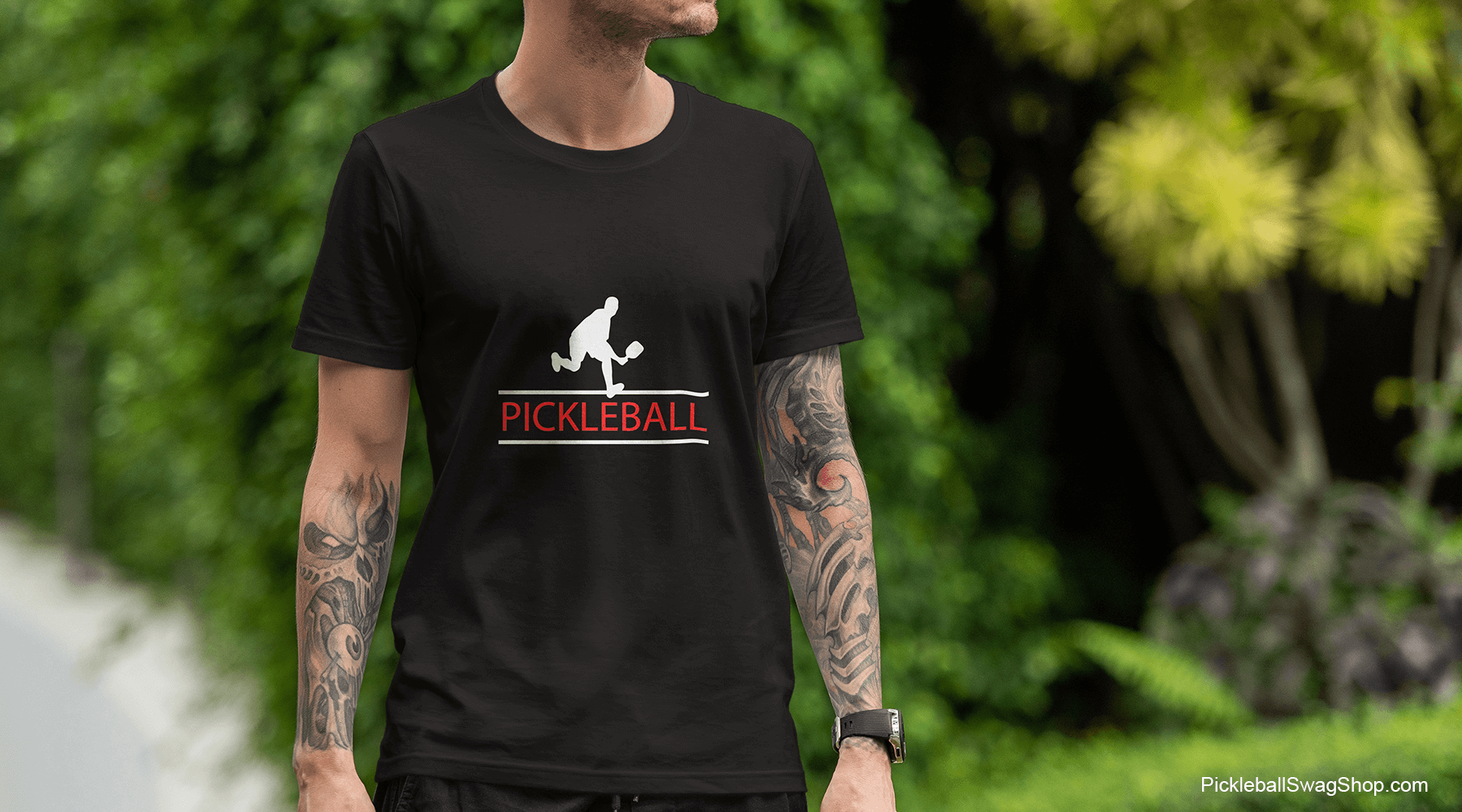Hip flexors and back pain in pickleball: play pain-free and enhance your performance
it doesn’t have to be this way…
Pickleball players may sometimes experience discomfort and pain in their hip flexors and back. It is a sport that requires a bit of moving around on a usually hard surface. There are bound to be aches and pain along the way. But it doesn’t have to be that way.
It can be very painful and certainly disruptive to your game – and life itself!
Let’s look at the relationship between hip flexors and back pain (and pickleball). We’ll also discuss effective strategies to relieve back pain and enhance your overall pickleball experience.
What are hip flexors?
Hip flexors are a group of muscles located in the front of the hip joint. They help in various movements, such as lifting your legs, bending at the waist, and maintaining balance. All pretty important stuff, especially in pickleball. The primary hip flexor muscles are the psoas major, iliacus, and rectus femoris.
Pickleball and hip flexor strain: understanding the impact
Pickleball is a very dynamic sport that requires agility, quick movements, and sudden changes in direction. These can place significant strain on the hip flexor muscles, leading to tightness and discomfort.
The role of hip flexors in pickleball
The hip flexor muscles, including the psoas major, iliacus, and rectus femoris, are responsible for flexing the hip joint, bringing the thigh closer to the torso.
Blah, blah, blah. What does all this mean?
They play a vital role in various movements involved in pickleball, such as lunging forward, reaching for shots, and quickly changing direction. Pickleball movements place tons of pressure on hip flexors and ultimately your back.
Quick Lateral Movement
Pickleball players often engage in rapid lateral movements to reach shots and cover the court effectively.
These lateral movements involve a combination of hip flexion, abduction, and external rotation, placing significant demand on the hip flexor muscles. The repetitive nature of these movements can lead to overuse and strain on the hip flexors.
Pivoting and Changes in Direction
Pickleball requires quick changes in direction, especially during intense rallies and competitive play. Even beginner players need to perform all of these movements.
Pivoting on one leg and rapidly shifting body weight can strain the hip flexor muscles, especially when performed repeatedly over the course of a pickleball game or even alone during a practice session with a pickleball ball machine! The explosive nature of these movements can result in muscle fatigue and tightness in the hip flexors.
Preventing hip flexor strain in pickleball
Let’s be clear on this: there are steps you can take to minimize the risk of hip flexor strain to maintain their flexibility and strength.
Here are several:
Warm-up Routine: Before your pickleball game, dedicate some time to a warm-up routine that includes stretches targeting the hip flexors. Leg swings, hip circles, and walking lunges are excellent warm-up exercises to prepare the hip flexors for your next match.
Stretching and Mobility Exercises: Include regular stretching exercises for the hip flexor muscles into your pre and post-game routines. Before you have that White Claw after the game, do some kneeling hip flexor stretches, standing quad stretches, and lunges. These can help maintain flexibility and reduce muscle tightness.
Strengthening Exercises: In addition to stretching, do some exercises that actually strengthen the hip flexor muscles and surrounding muscle groups. Consider squats, step-ups, and bridges to reduce the strain on the hip flexors during pickleball movements.
Unlock Hip Flexors: Unlock Your Hip Flexors is a simple and user-friendly program that you can start using right away to loosen your hip flexor muscles. You can enhance your strength, improve your overall health, and boost your energy levels throughout the day. This includes exercises that demonstrate and explain how to achieve the right form and effectively target the often hard-to-reach psoas muscle, which is the main culprit behind tight hip flexors.
Proper Technique and Body Mechanics: Focus on maintaining proper form and technique during pickleball. This is certainly tougher to do especially as you begin in pickleball because you may not even have a form just yet. Using proper technique can distribute the workload more evenly across the body, reducing strain on specific muscle groups. Perhaps consider a pickleball coach but make sure your instructor is not a fraud.
Listen to Your Body: Here’s our fave and it’s our last… pay attention to any signs of tightness, discomfort, or pain in the hip flexors. If you have any symptoms, it’s essential to rest, seek appropriate treatment, and consult with a healthcare professional. You do not want to do any permanent damage.
Remember, it’s critical to listen to your body and respect its limits. You know what your limits are and what does not feel right. Pushing through pain or ignoring early signs of strain can lead to more severe injuries and longer recovery times. Take preventive measures and incorporate exercises into your routine.
Are hip flexors related to back pain?
Yes, hip flexors can be closely linked to back pain.
Why’s that?
The hip flexor muscles are connected to the pelvis and the lower spine, specifically the lumbar region. When the hip flexors become tight or imbalanced, they can pull the pelvis forward, altering the natural curvature of the spine and causing strain on the lower back. This can result in severe back pain or exacerbate back issues that you that you were past.
The body is funny (not so hah, hah funny)…
One pulled, sore or tired muscle can affect so many others. In the beginning it may be subtle but over time it eventually catches up with you. Then one night your headed to the fridge and your back goes out… may all be related to the infamous hip flexors.
Relieving and preventing back pain in pickleball

There is a solution:
Are you tired of missing out on the joy of playing pickleball due to your nagging back pain? It’s frustrating when you can’t participate in the activities you love because of discomfort and limited mobility.
You’ve tried various methods, but nothing seems to bring lasting relief, leaving you feeling hopeless and agitated. Fortunately, there’s a solution that can help you regain your freedom on the pickleball court.
Unlock Your Hip Flexors is a straightforward program designed to loosen your hip flexor muscles, targeting the root cause of your back pain. By following this program, you’ll not only alleviate your discomfort but also enhance your overall strength and improve your health.
Imagine the satisfaction of stepping onto the pickleball court, pain-free and ready to perform at your best. With these exercises, you can bid farewell to back pain and resume your active life once again. Don’t let back pain hold you back from enjoying your favorite game—unlock the secret to lasting relief and get back in the game.

This is important:
Allow your body sufficient time to rest and recover between pickleball sessions. Overtraining and not giving your muscles time to repair can lead to chronic pain and injuries.
Take care of your hip flexors and address back pain. You do not want to be uncomfortable or limited as you play. By understanding the connection between hip flexors, back pain, and pickleball, you can implement effective strategies to prevent and relieve back pain in pickleball.
Remember, Unlock Your Spine is a program that can be beneficial for pickleball spinal health and overall well-being. However, it’s important to research and consult with a healthcare professional before considering any specific program or treatment option.
Sources:
American Academy of Orthopaedic Surgeons. (2021). Hip Flexor Strain
American Council on Exercise. (2021). The ACE Integrated Fitness Training Model for Flexibility Training: Part 2
Cleveland Clinic. (2020). How to Protect Your Lower Back During Exercise
Mayo Clinic. (2021). Back Pain
Mayo Clinic. (2021). Hip Flexor Strain
